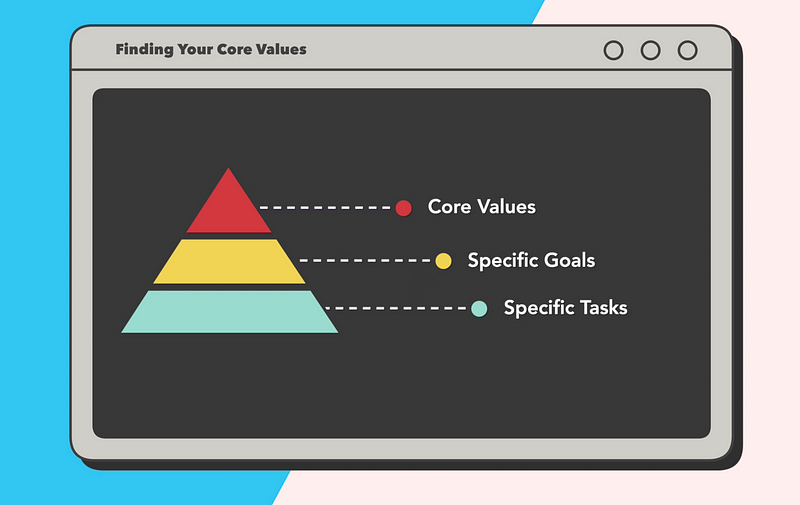Achieve Your Goals: A Comprehensive Guide to Effective Goal Setting
Written on
Chapter 1: The Reality of Goal Setting
Many of us experience setbacks when it comes to accomplishing our goals. Reflecting on last year, I set 17 objectives, including attaining 10,000 Twitter followers and launching an online course on effective note-taking. Ultimately, I reached only five.
This struggle is common; we often misjudge what we can realistically achieve in a year and the effort required. Nevertheless, I did succeed in some significant areas, such as creating digital products that generated $10,000 in sales and growing my Twitter following to nearly 9,000.
From these experiences, I wish to share insights about goal setting to help you choose motivating objectives and develop a streamlined approach to achieving them.
Why Goal Setting is Important
Although we frequently fall short of our yearly goals, it’s crucial not to disregard goal setting. The significance lies not merely in achieving these goals, but in the process of setting them itself.
Why do goals matter? Here are six compelling reasons:
- Goals help prioritize your time, allowing focus on what truly matters.
- They clarify your destination and help you devise a plan to reach it.
- A structured plan injects purpose into daily activities, fueling motivation for future efforts.
- Goals encourage personal growth by nudging you out of your comfort zone.
- They promote accountability and help combat procrastination.
- Tracking progress provides a sense of fulfillment, as noted by Tony Robbins: "progress equals happiness."

Designing Your Goal Achievement System
1. Identify Your Core Values Let’s delve into the goal-setting process using my preferred tool, Amplenote. However, feel free to use any platform that suits you.
Recognizing the importance of goals, we must select the right ones and create a system for achieving them. How do we determine if a goal is worth pursuing? Often, we view goals as external expectations imposed by society, family, or friends.
Instead of conforming to societal norms, it’s vital to start with what truly matters to you. Ask yourself:
- If money were no object, how would you spend your time?
- What aspects of life do you value most?
- When do you feel most alive and excited?
These questions can help you gain deeper self-awareness. Personally, my core values include autonomy, financial freedom, health, and nurturing relationships. Consequently, my overarching goals are:
- "I want the flexibility to work from any location."
- "I aim to create sufficient passive income through investments and business."
- "I wish to maintain a healthy lifestyle through regular exercise and diet."
- "I want to cultivate meaningful connections with those around me."

2. Turn Core Values into Specific Goals Merely having a goal is insufficient; it requires a plan to transform it into action. Start by refining your core values into concrete goals that guide your actions.
For example, the vague goal of "generating passive income" lacks clarity. However, if you specify, "I will generate $5,000/month in passive income by the end of 2022," it becomes actionable. You can then break it down into manageable tasks, such as:
- Promote six favorite products as an affiliate.
- Create two small digital products each quarter.
- Write one ebook.
Ensure your goals are realistic. Overly ambitious goals can lead to frustration, while goals that are too easy can diminish your sense of purpose and fulfillment.
3. Divide Goals into Actionable Steps and Schedule Them Breaking down broader goals into manageable daily tasks is essential. For instance, my goal of "writing one ebook" can be segmented into smaller, actionable steps.
Next, incorporate these tasks into your calendar. Calendar blocking is a powerful strategy that enhances focus and productivity by clearly defining your daily activities.

5 Techniques to Stay Committed to Your Goals
Now that you have a robust plan, let’s explore strategies to maintain your commitment to it. Here are five effective techniques:
- Choose a Realistic Time Frame: Opt for shorter periods, such as 1-3 months, to maintain motivation. I prefer setting quarterly goals, which allows me to focus my efforts effectively.
- Eliminate Unwanted Goals: Recognize "goal competition," which refers to how multiple goals can distract from your primary objectives. Letting go of goals that no longer resonate can significantly enhance your focus on what truly matters.
- Visual Reminders: Keep your goals visible by printing them or using a vision board. This constant reminder can help prioritize your goals amidst daily tasks.
- Find an Accountability Partner: Collaborating with others pursuing similar goals can bolster your commitment. For example, joining a running group can increase your likelihood of sticking to your fitness objectives.
- Monitor Your Progress: Keeping track of your achievements fosters motivation and satisfaction. For example, I maintain a spreadsheet to monitor my Twitter growth, which provides insight into my progress.
Summary
In conclusion, begin by identifying your core values to set meaningful goals. Transform those values into specific, measurable objectives. Finally, break down each goal into smaller, actionable tasks and integrate them into your calendar. While any tool can facilitate this process, I personally recommend Amplenote for its tailored features.

This video discusses creating a pyramid for setting and achieving your goals, providing useful strategies for effective planning.
In this video, you will learn about a goal pyramid template that can simplify your goal-setting process and help you stay focused.